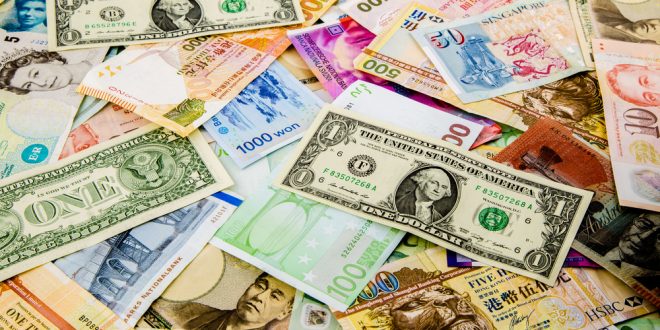The U.S. dollar held firm on Tuesday as investors viewed President Donald Trump’s tariff threats primarily as a negotiating tactic rather than an immediate escalation of trade hostilities. This assessment followed Trump’s decision to suspend planned tariffs on Mexico and Canada, a move that provided temporary relief to markets.
However, the imposition of additional 10% tariffs on Chinese imports, effective 12:01 a.m. ET on Tuesday, underscored ongoing trade frictions. Analysts warned that currency markets would likely remain highly sensitive to developments in the U.S.-China trade dispute, fueling continued volatility.
Dollar Index Holds Steady; Canadian Dollar and Mexican Peso Weaken
The U.S. dollar index (DXY), which measures the greenback against a basket of six major currencies, was unchanged at 108.5.
- The Canadian dollar fell 0.15% to C$1.4428, following a sharp rebound from Monday’s low of C$1.4792, its weakest level since 2003.
- The Mexican peso dropped 0.23% to 20.380, after a 1.5% surge on Monday, reflecting investor uncertainty despite Trump’s temporary tariff suspension.
Yuan and Australian Dollar Under Pressure Amid China’s Retaliatory Tariffs
Beijing retaliated on Tuesday by announcing tariffs on select U.S. imports, intensifying trade tensions between the world’s two largest economies.
- The Chinese yuan weakened 0.15% to 7.2914 per dollar in offshore trading. Mainland Chinese markets remained closed for the Lunar New Year holiday, with official trading resuming on Wednesday.
- The Australian dollar, often viewed as a liquid proxy for the yuan due to Australia’s economic ties to China, dropped 0.35% to $0.6206—though it remained above Monday’s low of $0.6085, the weakest level since April 2020.
Euro Declines as ECB Rate Cut Bets Increase
The euro slipped 0.15% to $1.033, as markets remained cautious over potential U.S. tariffs on the European Union. Such measures are expected to increase inflationary pressures in the U.S., potentially keeping Federal Reserve interest rates higher for longer, which would support the dollar.
Meanwhile, investors raised their bets on European Central Bank (ECB) rate cuts, with money markets now pricing in a December deposit rate of 1.85%, down from 1.95% on Friday.
Other Major Currencies: Sterling, Yen, and Market Sentiment
- The British pound edged lower against the euro after posting its biggest daily gain in three months on Monday. Investors are assessing how U.S. tariffs might impact the European economy more than the UK.
- The Japanese yen, a traditional safe-haven asset, weakened 0.38% to 155.31 per dollar, as recent dollar strength made the greenback less appealing compared to the yen.
Outlook: Volatility Expected as Trade Disputes Persist
With U.S.-China tensions escalating and European trade uncertainties looming, currency markets are likely to experience heightened volatility. Investors will be closely watching potential policy shifts from the Federal Reserve and the ECB, as well as upcoming trade negotiations, which could significantly impact global forex markets.
 Noor Trends News, Technical Analysis, Educational Tools and Recommendations
Noor Trends News, Technical Analysis, Educational Tools and Recommendations





